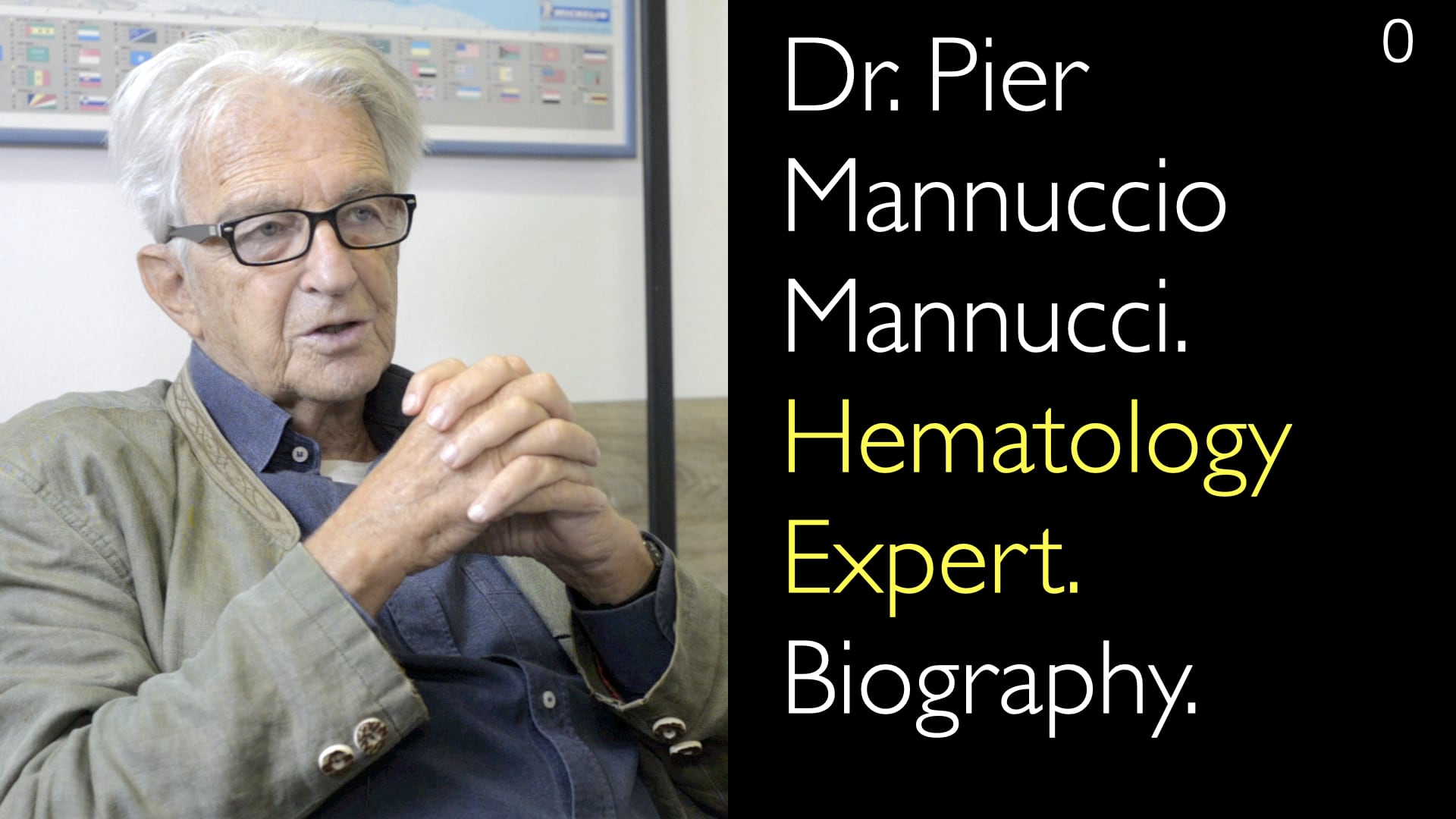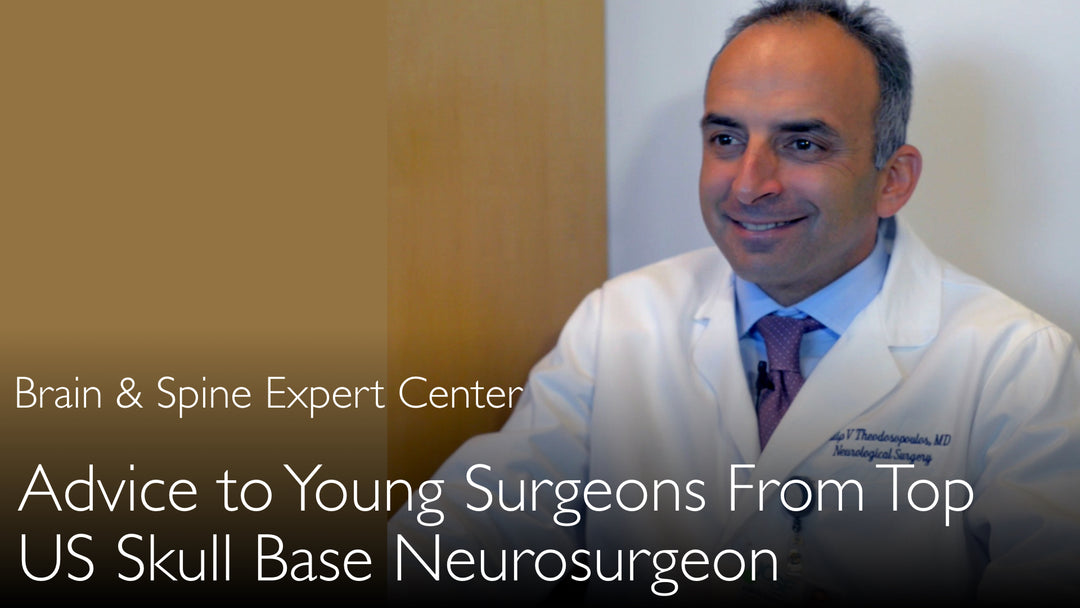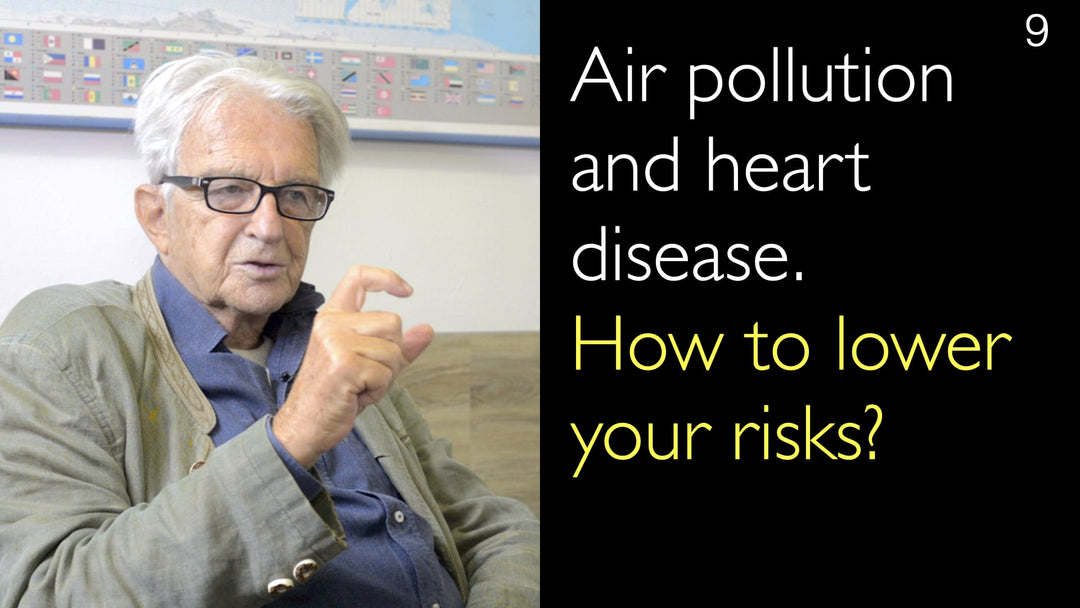Dr. Pier Mannucci, MD, en førende ekspert inden for ernæring og metabol sundhed, forklarer, hvordan personliggjort kosttilpasning kan tilrettelægges ud fra individuelle sundhedsrisici. Han fremhæver, at fødevareforarbejdning har større betydning end makronæringsstofbalancen. Dr. Mannucci anbefaler en kost med rigelige mængder af helnærende fødevarer som grøntsager, frugt og fisk. Han knytter bæredygtige fødevarevalg sammen med globale miljøudfordringer. Tilgangen lægger vægt på ægte fødevarer frem for forarbejdede produkter for at fremme langsigtet sundhed.
Personificerede Ernæringsstrategier for Optimal Sundhed og Sygdomsforebyggelse
Spring til afsnit
- Forståelse af Personificeret Ernæring
- Fødevareforarbejdning vs. Sammensætning
- Globale Bæredygtighedsudfordringer
- Praktiske Kosteksempler
- Integration af Sundhed og Miljø
- Fuld Transskription
Forståelse af Personificeret Ernæring
Dr. Pier Mannucci, MD, definerer personificeret ernæring som tilpasning af kost baseret på individuelle sundhedsrisici og diagnoser. Han illustrerer dette med et klinisk eksempel: En 60-årig patient med tidlige tegn på metabolsk syndrom skiftede proaktivt fra en kødrig kost til en kvasi-vegetarisk diæt. Ifølge dr. Mannucci udgør sådanne tilpasninger effektiv primær forebyggelse. Ved bevidste fødevarevalg kan man modvirke iboende genetiske risici.
Fødevareforarbejdning vs. Sammensætning
Dr. Pier Mannucci, MD, fremhæver, at fødevareforarbejdning udgør en større sundhedsrisiko end selve næringsstofsammensætningen. Oxidation under forarbejdning kan omdanne ellers sikre ingredienser til skadelige forbindelser. I interviewet med dr. Anton Titov, MD, nævnes eksemplet med traditionel yoghurt – en fedtrig, men gavnlig fødevare. Dr. Mannucci anbefaler at fokusere på hele fødevarer frem for at læse på pakkede varers etiketter. Derved undgår man de faldgruber, som stærkt forarbejdede produkter udgør i moderne kostvaner.
Globale Bæredygtighedsudfordringer
Dr. Pier Mannucci, MD, knytter personificeret ernæring sammen med planetarisk sundhed i en verden med 10 milliarder mennesker. Han påpeger, at fødevareproduktion allerede driver afskovning i lande som Brasilien, Indien og Indonesien. Landbrugsudvidelse og husdyrhold bidrager signifikant til luftforurening gennem ammoniakemissioner. Ifølge dr. Mannucci må bæredygtig ernæring balancere menneskelig sundhed med miljømæssig kapacitet. Denne dobbelte tilgang er afgørende for langsigtet global fødevaresikkerhed.
Praktiske Kosteksempler
Dr. Pier Mannucci, MD, bruger middelhavskosten til at illustrere et sundt fedtindtag. Traditionelle græske og tyrkiske yoghurttyper indeholder gavnlige fedtstoffer på trods af deres høje fedtindhold. Han sammenligner disse med forarbejdede lavfedtsalternativer, som ofte indeholder konserveringsmidler og tilsætningsstoffer. Dr. Mannucci understreger over for dr. Anton Titov, MD, at palmeolie i sig selv ikke er farlig – det er forarbejdningen og miljøpåvirkningen, der skaber problemer. Disse eksempler viser, hvordan kulturelle kostvaner ofte stemmer overens med optimal ernæringsvidenskab.
Integration af Sundhed og Miljø
Dr. Pier Mannucci, MD, taler for en helhedsorienteret tilgang til ernæring, der tager højde for både personlig og planetarisk sundhed. Han understreger, at ingen enkelt fødevarekategori kan betragtes som universel synder for sundhedsproblemer. Et balanceret indtag af minimalt forarbejdede fødevarer danner grundlaget for bæredygtige spisemønstre. Dr. Mannuccis diskussion med dr. Anton Titov, MD, konkluderer, at lejlighedsvis forkælelse udgør minimal risiko, når den samlede kostkvalitet er høj. Dette perspektiv adresserer både individuel trivsel og globale fødevarsystemudfordringer.
Fuld Transskription
Dr. Anton Titov, MD: De har for nylig skrevet en oversigtsartikel om bæredygtig og personificeret ernæring. De omtalte præcisionsernæring som en del af præcisionsmedicin. Hvad er præcisionsernæring eller personificeret ernæring? Og hvordan gør man global ernæring bæredygtig?
Dr. Pier Mannucci, MD: Jeg må indrømme, at præcisionsernæring er en smule en modetendens. Betegnelsen opstod i feltet, fordi det er meget moderne. Men personificeret ernæring er sandsynligvis mere forståeligt. Det er, hvad alle med en sygdom eller risikofaktorer gør. Vi har alle tendens til at tilpasse vores kost – især syge mennesker eller dem med sygdomsrisiko. Men også sunde mennesker ændrer ofte deres kost baseret på deres risikofaktorer.
Lad mig give et eksempel. I min private praksis så jeg i går en 60-årig, meget sund person. Han havde ingen symptomer, men visse prøver viste risiko for metabolsk syndrom: meget højt kolesterol, grænseoverskridende urinsyre og blodsukker. Han var altså i en tidlig fase af metabolsk syndrom.
Han forstod problemet. Han kom fra en region i Italien, hvor kosten primært består af animalske fødevarer eller kød – de spiser meget kød. Han skiftede til en kvasi-vegetarisk diæt. Dette er efter min mening et typisk eksempel på personificeret ernæring.
Han sagde: "Jeg er næsten vegetar," med nogle undtagelser – han spiser fisk en gang imellem, hvilket er godt. Han besluttede det selv, så jeg kunne kun tilføje lidt. Han motionerer også meget, 10.000 skridt dagligt. Det er et typisk eksempel på, hvor effektiv primær forebyggelse kan være, selv hos mennesker med risikofaktorer.
Deres risici er sandsynligvis iboende i deres arv, da kolesterol primært skyldes arv snarere end kost. Sådan er personificeret ernæring. Denne mand valgte rigtigt ved at spise masser af grøntsager og frugt og dramatik reducere kød og forarbejdet mad. I stedet spiser han masser af fisk.
Det handler ikke kun om præcisions- eller personificeret ernæring, som er let at forstå. Det er også et bæredygtighedsspørgsmål. Verdens befolkning vokser, og snart er vi 10 milliarder mennesker. Fødevarekilderne bliver usikre.
For at levere mad – selv vegetabilsk mad – må man fælde skove, hvilket er et problem i Brasilien, Indien, Kina og Indonesien. I Kina har folk i det mindste lært af det og planter nu skov i eget land, i modsætning til Brasilien. Det gælder også for europæiske lande, og sikkert også nogle dele af Rusland.
Hvad jeg har lært af min nylige interesse for ernæring, er, at det ikke handler så meget om fødevarens sammensætning. Kulhydrater, sukker, fedt og proteiner er ikke synderne i sig selv. Det er ikke værd at fokusere på fødevaretsiketternes oplysninger, for mad indeholder naturligvis kulhydrater.
Kulhydrater er kun farlige, når de er sukker, som forårsager en hurtig stigning i blodsukkeret. Men der er også kulhydrater i sunde fødevarer som grøntsager og frugt, som ikke er skadelige. At vurdere mad ud fra etiketter i supermarkedet er derfor misvisende.
Det vigtige er, hvad vi spiser – makrosammensætningen af hele kosten. Og om maden er forarbejdet eller ej. Forarbejdning skader mere end ingredienserne.
For eksempel forårsager forarbejdning oxidation af kolesterol og olier, som ellers ikke er farlige. De oxiderede produkter af fenoler og kolesterol er de farlige. Så det afgørende er at have en sund kost baseret på hele fødevarer.
Man bør undgå forarbejdet mad og overdrevent kødindtag på grund af kræftrisiko. Se på fødevarens natur og kilde, ikke kun sammensætningen og mikronæringsstoffer.
Det er ikke let at forklare, men lad mig give et eksempel. I Grækenland og Tyrkiet spiser de meget yoghurt, som er meget fed. Man skulle tro, det ikke er godt for folk med højt kolesterol, men det passer ikke.
Yoghurt som tyrkisk kefir eller ayran, selvom den er fed, indeholder gavnlige fedtstoffer. Modsat indeholder forarbejdet yoghurt i vores land måske mindre fedt, men også konserveringsmidler. Det er blevet vist, at græsk og tyrkisk yoghurt ikke er farlig, selv for diabetikere eller folk med metabolsk syndrom.
Der er en tendens til at se fedt, smør og palmeolie som syndebukke. Mange kiks indeholder palmeolie. Palmeolie i sig selv er ikke farlig; det er forarbejdningen, der er problemet. Palmeolie har også et miljøproblem, fordi dyrkningen ødelægger skove i Indonesien. Men som vegetabilsk olie er den god.
Olivenolie er fremragende, men det er svært at ernære hele verden med det, fordi det kun dyrkes bestemte steder. Det er svært at producere store mængder. Det samme gælder for andre grøntsager.
Jeg understreger igen: Det afgørende er, hvordan maden er forarbejdet og serveret. Fødevarekilden betyder mere end sammensætningen.
Hvad angår præcisionsernæring eller personificeret ernæring: Man behøver ikke undgå kød helt. Der er andre proteinkilder. Kød er ikke en fjende, og det samme gælder kulhydrater, som er en vigtig del af kosten. Fedt er også nødvendigt. Spørgsmålet er forarbejdning og servering, samt bæredygtigheden i produktionen.
I fremtiden vil der være 10 milliarder mennesker, og der vil ikke være nok mad til alle. Det er et stort problem, som klimaeksperter må tackle.
Lad os tage klimaspørgsmålet. Dyrefabrikker og intensivt landbrug betragtes normalt ikke som store forureningskilder, men de er vigtige. De producerer ammoniak, som bidrager til forurening – måske mindre end partikler, men stadig signifikant.
Verden er et integreret system. Det er svært at tackle problemer sektorielt; man skal se helheden. Jeg er meget interesseret i at uddybe min viden på området.
Alt i alt er budskabet, at personlig ernæring handler om befolkningsrisici, at ingen enkelt fødevare er skyldig, og at kosten skal være afbalanceret. Man bør være opmærksom på indtag af rødt kød og undgå stærkt forarbejdede fødevarer og kulhydrater som f.eks. tiramisu.
Lejlighedsvis forkælelse skaber ingen problemer. Det er, hvad jeg kan sige. Jeg ved, det ikke er et særligt videnskabeligt budskab, men jeg er ikke ekspert. Jeg har lært meget de senere år om ernæring, polyfarmaki, luftforurening og trombose. Jeg er stadig en nysgerrig person, som du sikkert har bemærket.
Dr. Anton Titov, MD: Tak. Tak, professor Mannucci!


![Personlig ernæring. Hvordan vælger man den rigtige mad? 8. [Del 1 og 2]](http://diagnosticdetectives.dk/cdn/shop/products/Dr_Pier-Mannuccio_Mannucci_thrombosis_bleeding_hematology_treatment_Diagnostic_Detectives_Network.009.jpg?v=1660905376&width=1080)
![Personlig ernæring. Hvordan vælger man den rigtige mad? 8. [Del 1 og 2]](http://diagnosticdetectives.dk/cdn/shop/products/Dr_Pier-Mannuccio_Mannucci_thrombosis_bleeding_hematology_treatment_Diagnostic_Detectives_Network.009_d2434545-ae9c-4329-9e18-fd58e057bc7c.jpg?v=1660905388&width=1080)
![Personlig ernæring. Hvordan vælger man den rigtige mad? 8. [Del 1 og 2]](http://diagnosticdetectives.dk/cdn/shop/products/Dr_Pier-Mannuccio_Mannucci_thrombosis_bleeding_hematology_treatment_Diagnostic_Detectives_Network.009.jpg?v=1660905376&width=720)
![Personlig ernæring. Hvordan vælger man den rigtige mad? 8. [Del 1 og 2]](http://diagnosticdetectives.dk/cdn/shop/products/Dr_Pier-Mannuccio_Mannucci_thrombosis_bleeding_hematology_treatment_Diagnostic_Detectives_Network.009_d2434545-ae9c-4329-9e18-fd58e057bc7c.jpg?v=1660905388&width=720)





